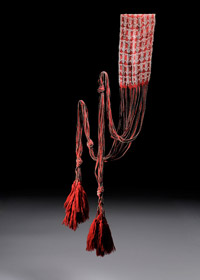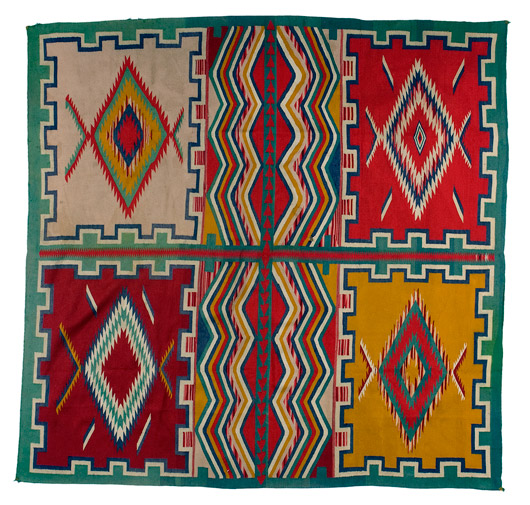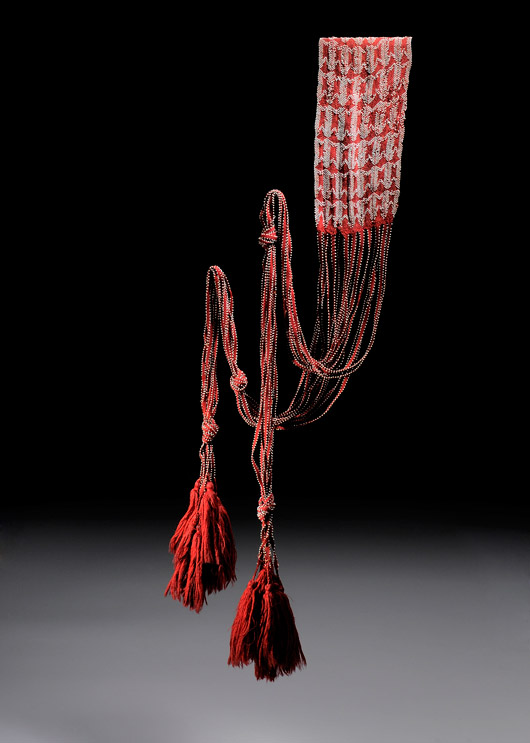
CINCINNATI – A rare and important Seminole shoulder sash likely collected during the Second Seminole War (1835-1842), will hit the auction block during Cowan’s American Indian Art Auction on April 4, 2009. It carries a presale estimate of $15,000-$20,000.
The fresh-to-the market sash was collected by George W. Martin (1812-189_?), a member of Company E of the 4th Regiment of the U.S. Infantry. He participated in many engagements of the Second Seminole War (1835-1837), including the infamous battle of Lake Okeechobee. It is likely that Martin acquired this sash during his time in service.
The Second Seminole War is defined by the Seminole’s defiance against American troops, who attempted to force the Seminole to leave their Florida home for Western reservations. While most of the remaining Seminole had moved to reservations by the war’s end in 1842, some members of the tribe retreated into the Everglades and remain there to this day.
The sash’s rarity is illustrated by its frog motif, atypical of the motifs usually found on such sashes from Southeastern tribes.
Native populations in the Southeast perceived a three-tiered world occupied by various animals, plants, humans, and deities capable of traveling between cosmic levels. These three tiers – the sky, or upper world, the middle world, and the underworld (often viewed as water) – provided the cosmic framework in which all living things, and even inanimate objects, interacted.
The frog, a clan symbol, was revered for its ability to transcend worlds, and was associated with the eclipse of the sun and certain sicknesses. The wearer of a garment with a creature revered for its powers would be viewed with respect and fear. Frog Clan members are recognized for being peacemakers and advisors and their opinions carry great weight. During a troubled time such the Second Seminole War, the words of a Frog Clan member would have been highly regarded.
Another key lot in Cowan’s upcoming sale is a Navajo Germantown weaving (est. $30,000-$40,000). The weaving consists of six panels of varying complex designs in brilliant shades of red, gold, green, blue and cream. Similar examples of six- and nine-panel Germantown weavings can be found in the collections of Anthony Berlant and the Maxwell Museum of Anthropology. The Navajo Germantown weaving is made with yarn from Germantown, Pa., which the Navajos are believed to have acquired when they were moved off their land by the government.
The fully illustrated catalog will be available to view online soon at www.LiveAuctioneers.com. Visit Cowan’s online at www.cowanauctions.com.
About Cowan’s Auctions:
Cowan’s is one of the nation’s leading auction houses specializing in four divisions: Historic Americana; American Indian and Western Art; Paintings, Furniture and Decorative Art; and Historic Firearms and Early Militaria. Cowan’s has long been helping individuals and institutions to build important collections with sales that routinely set world records for rare offerings.
ADDITIONAL LOTS OF NOTE




